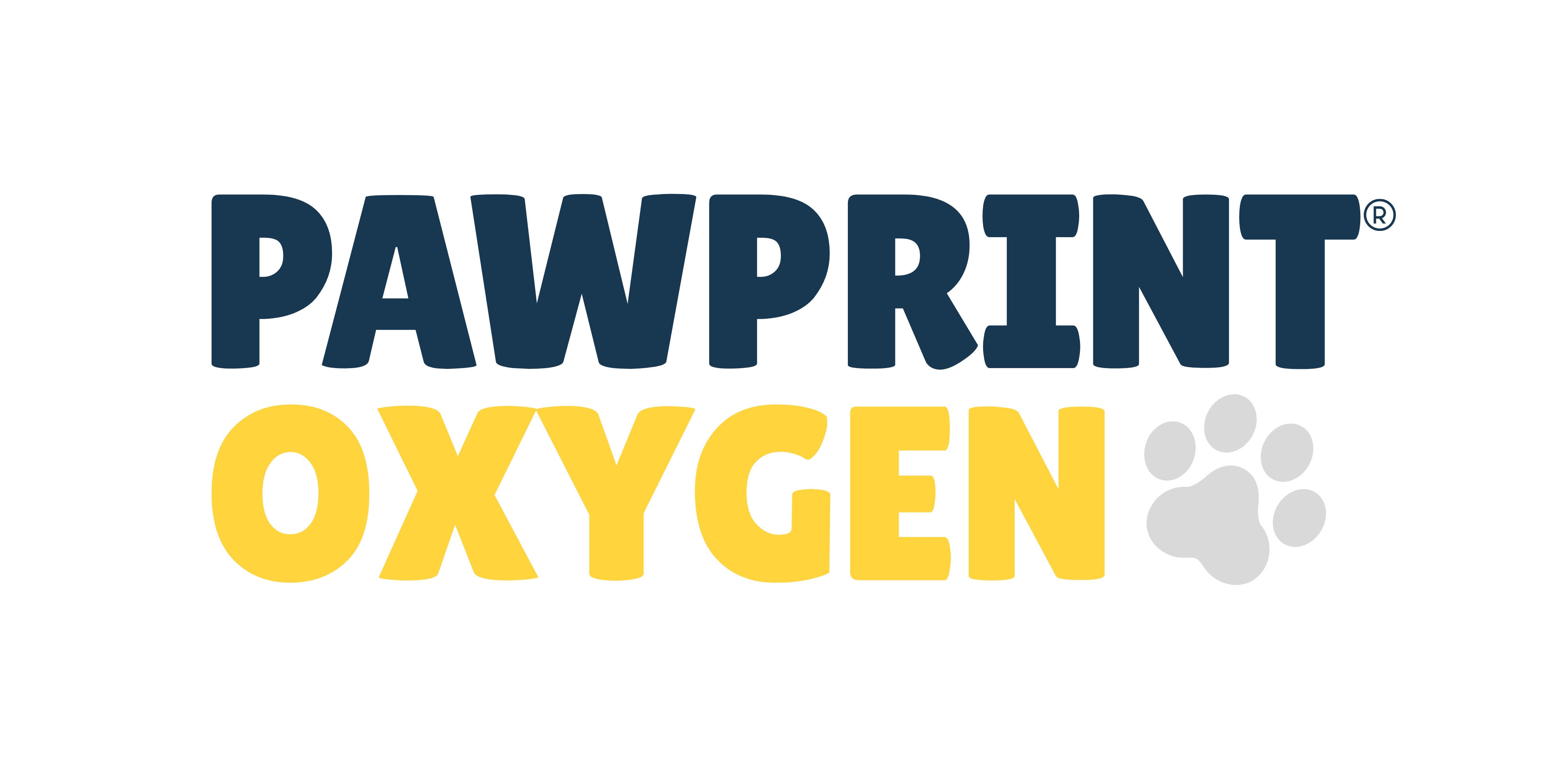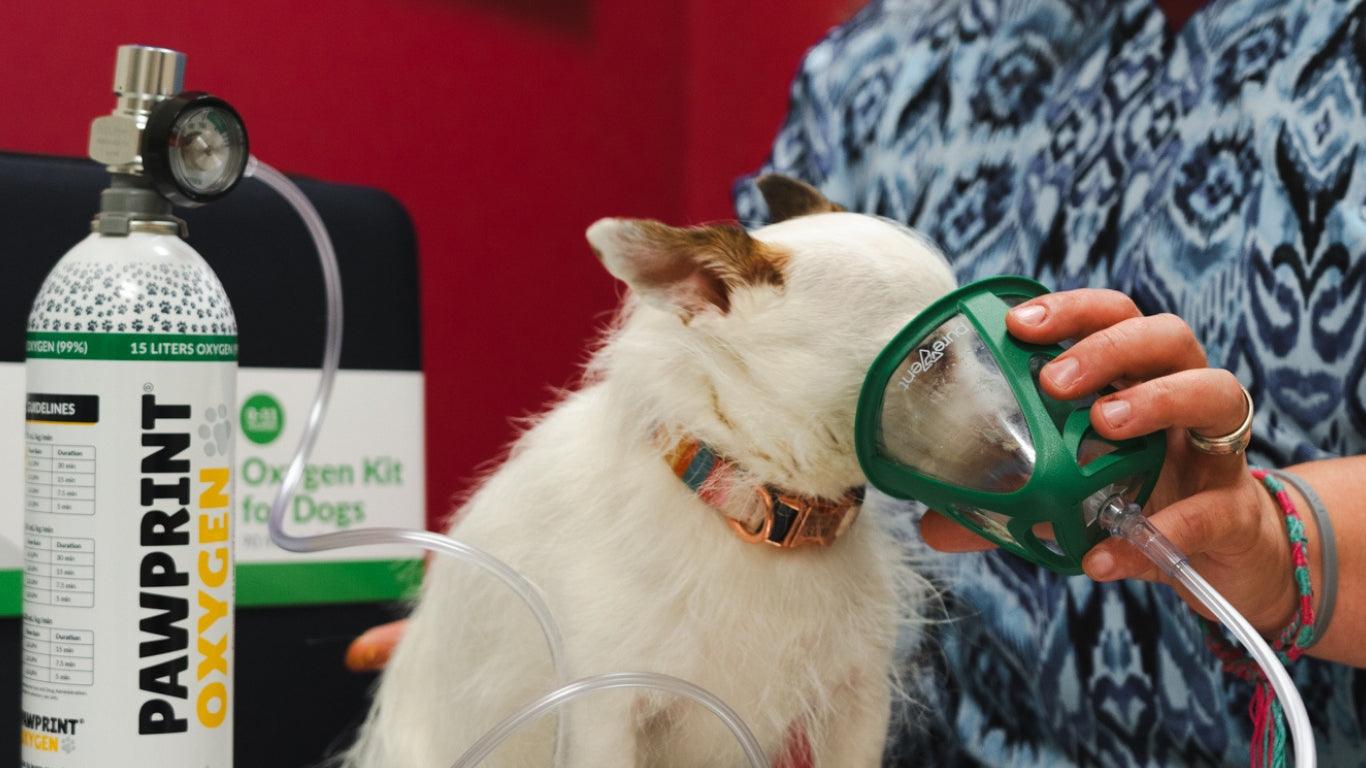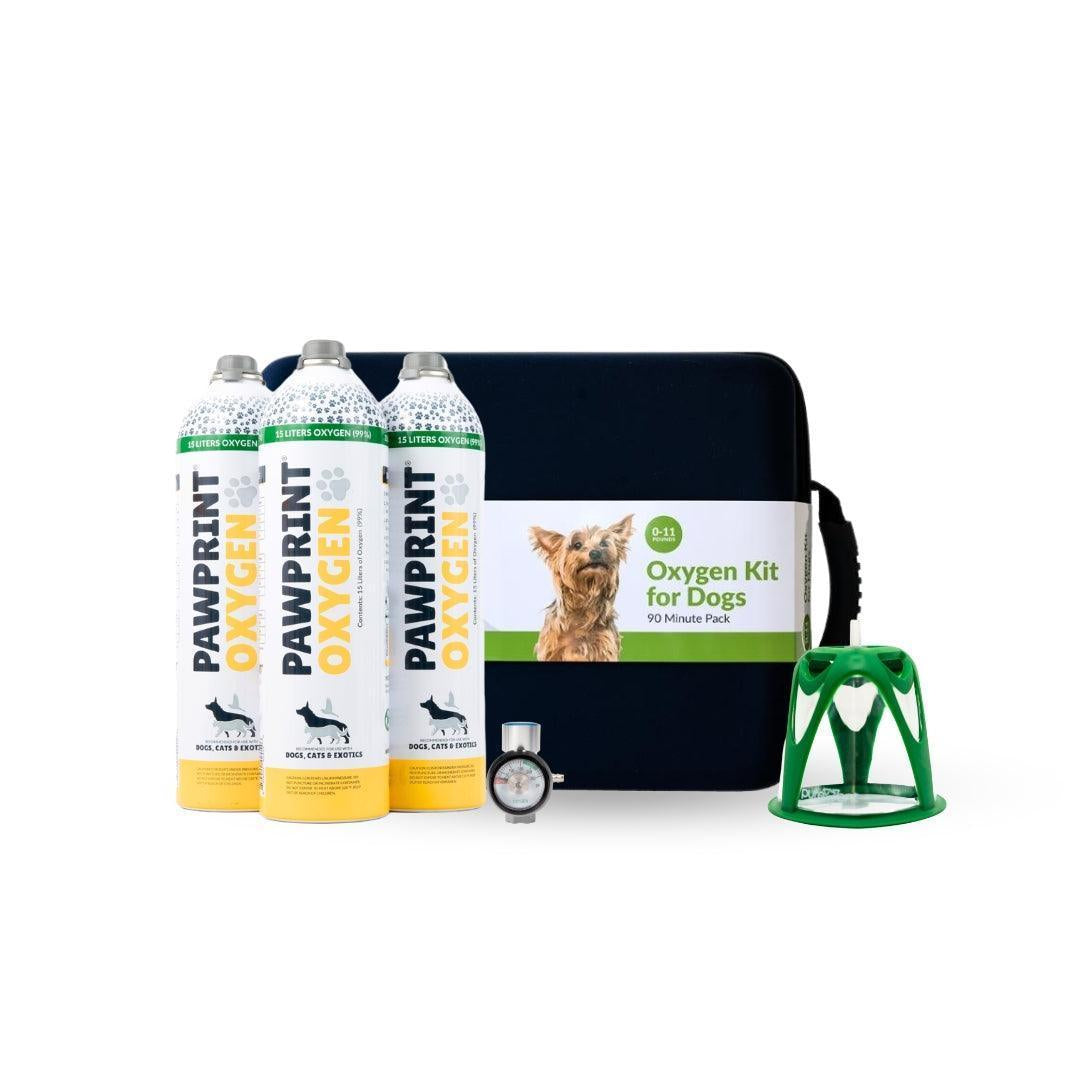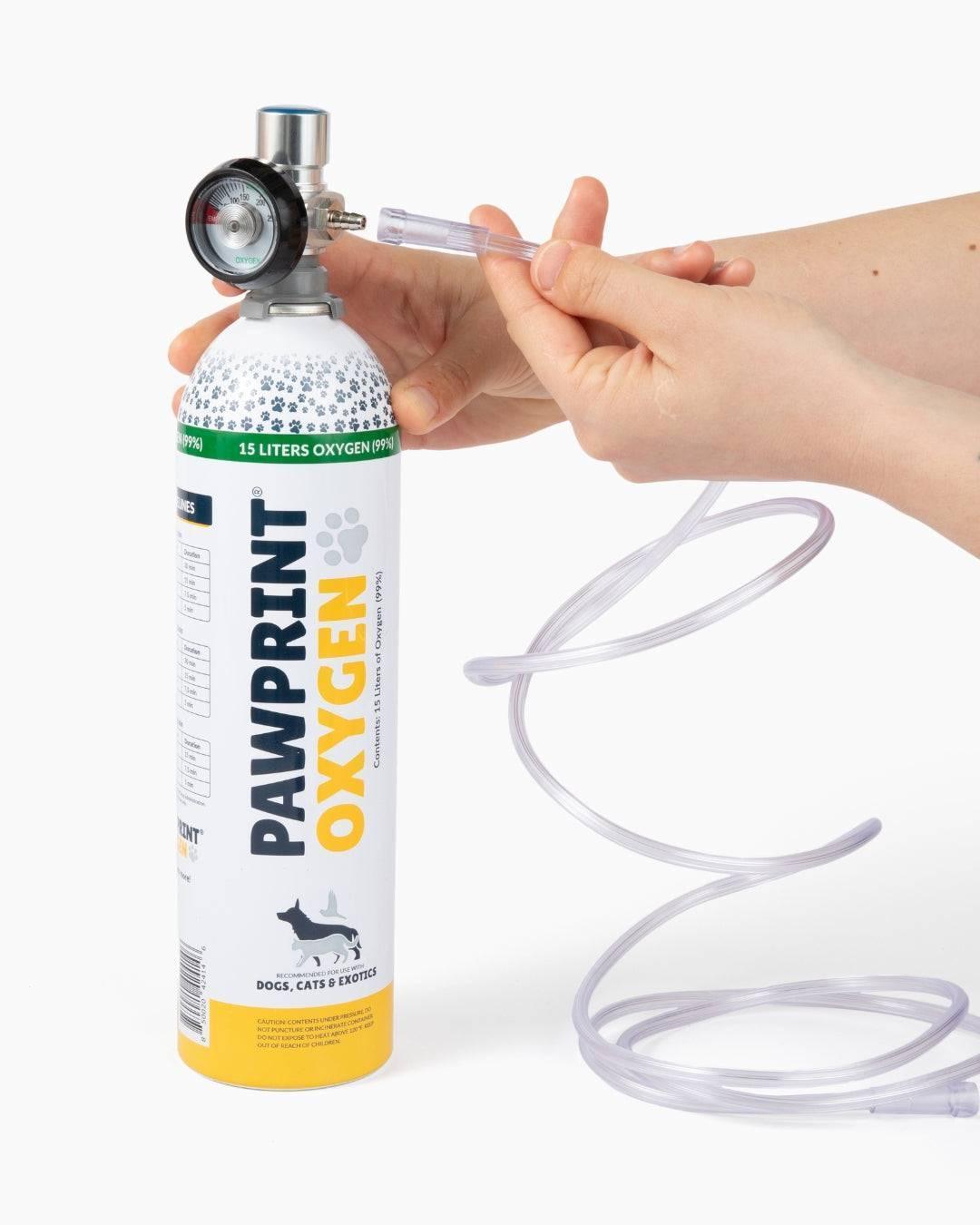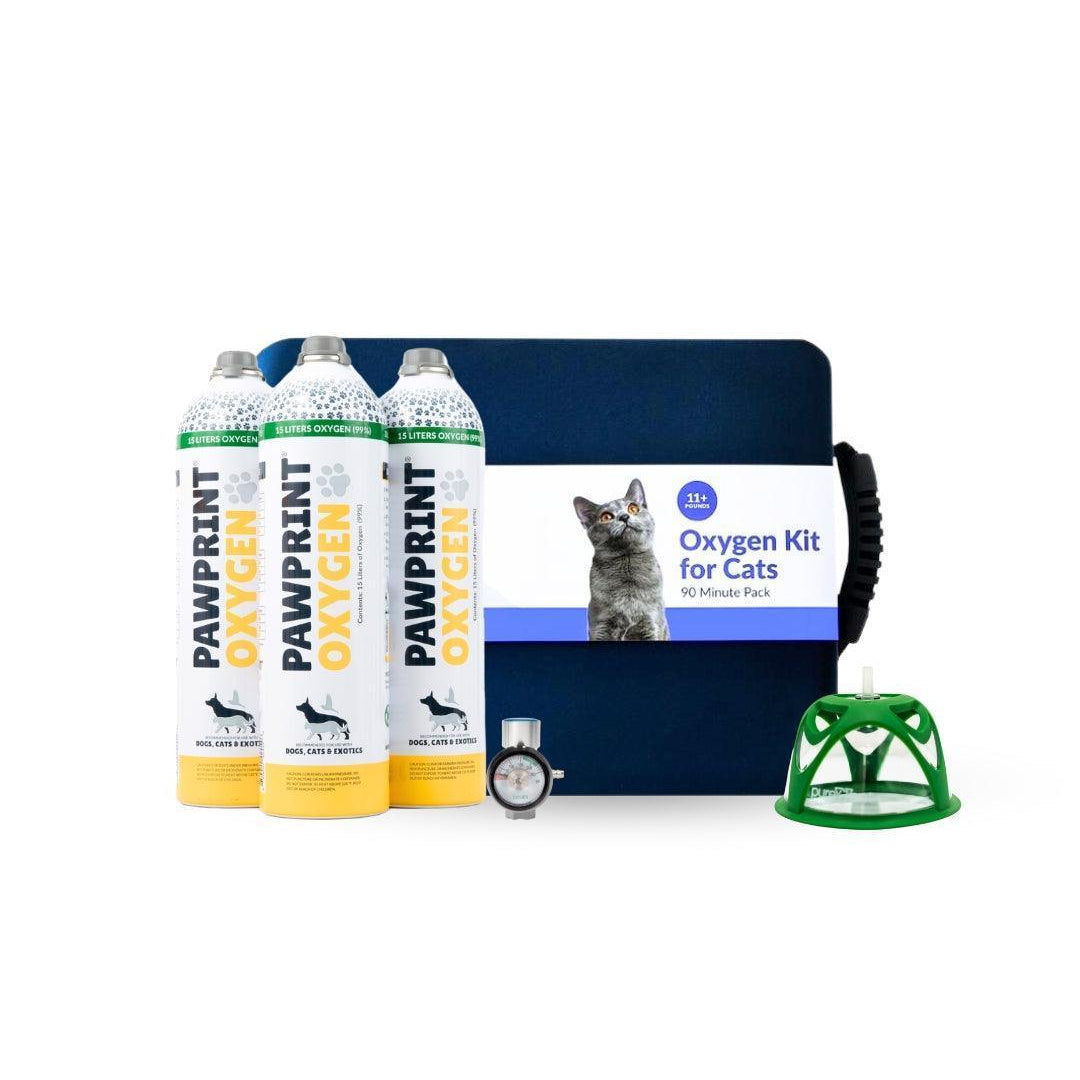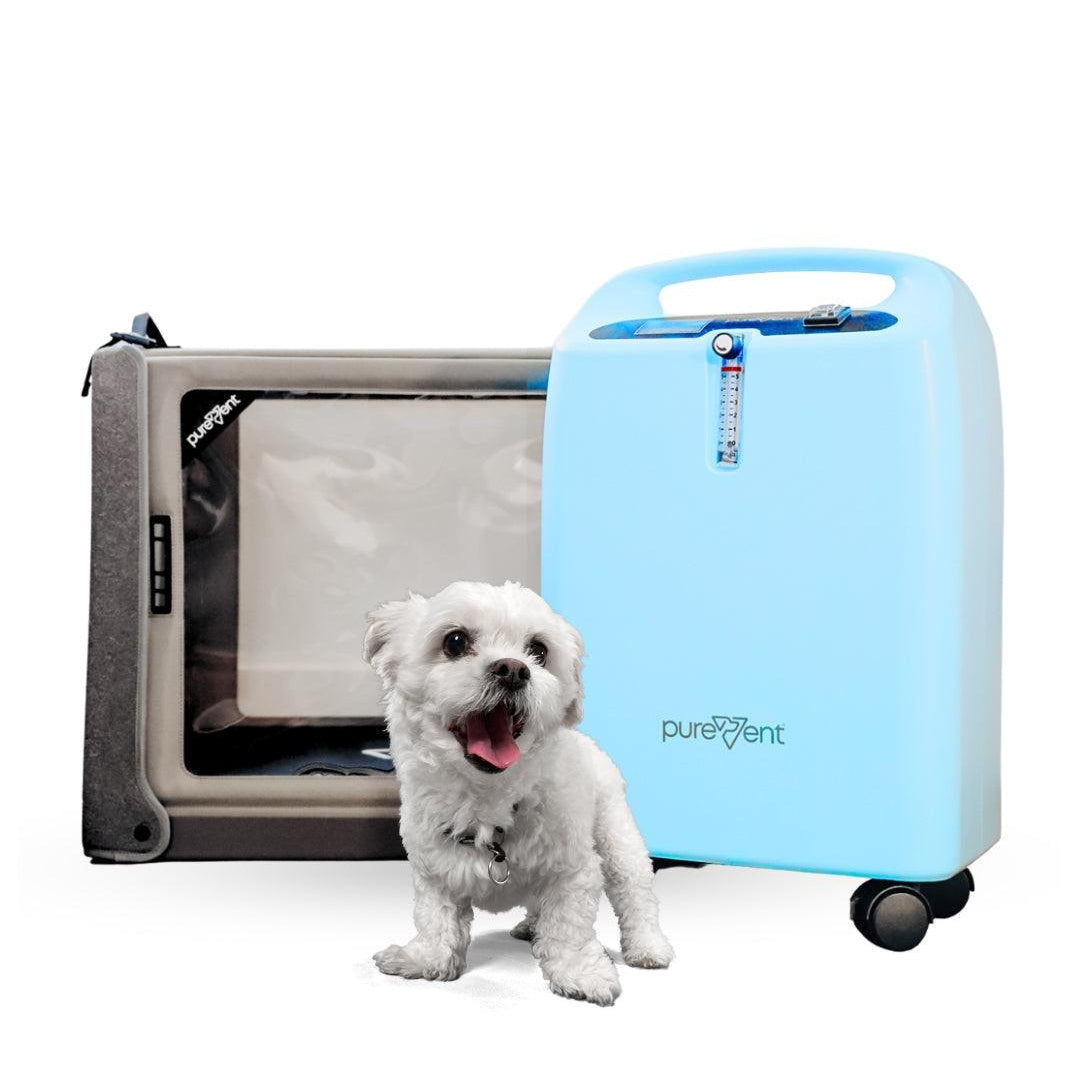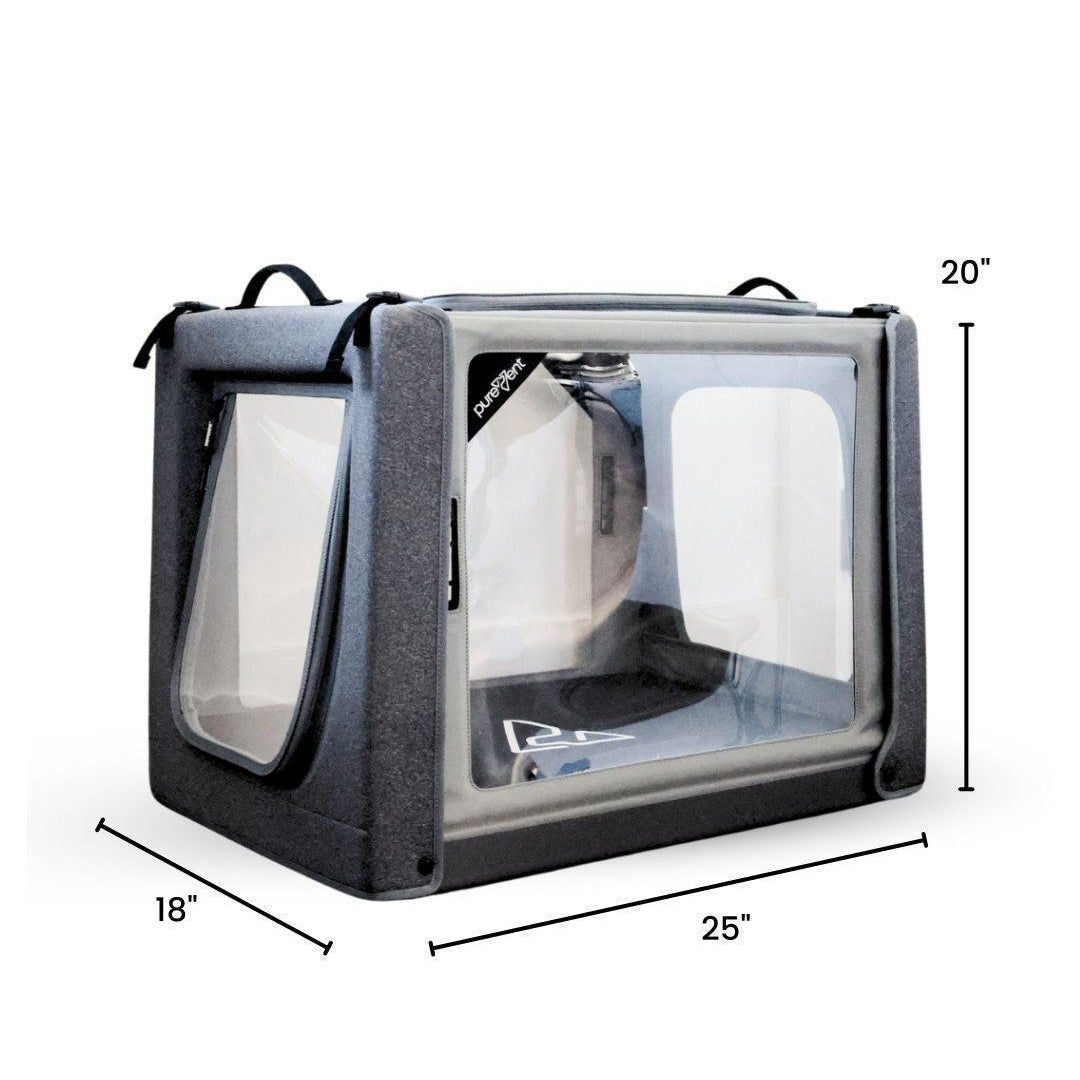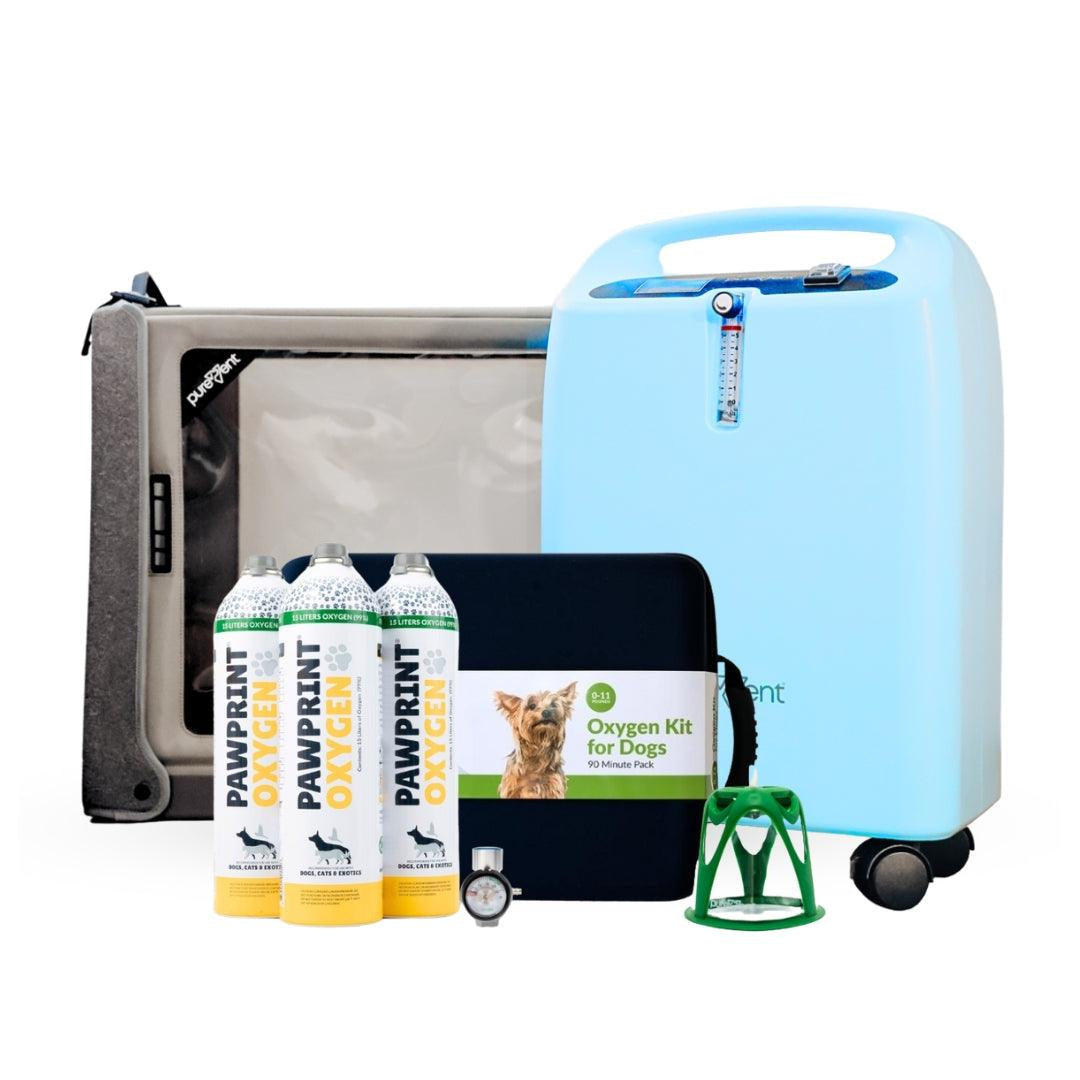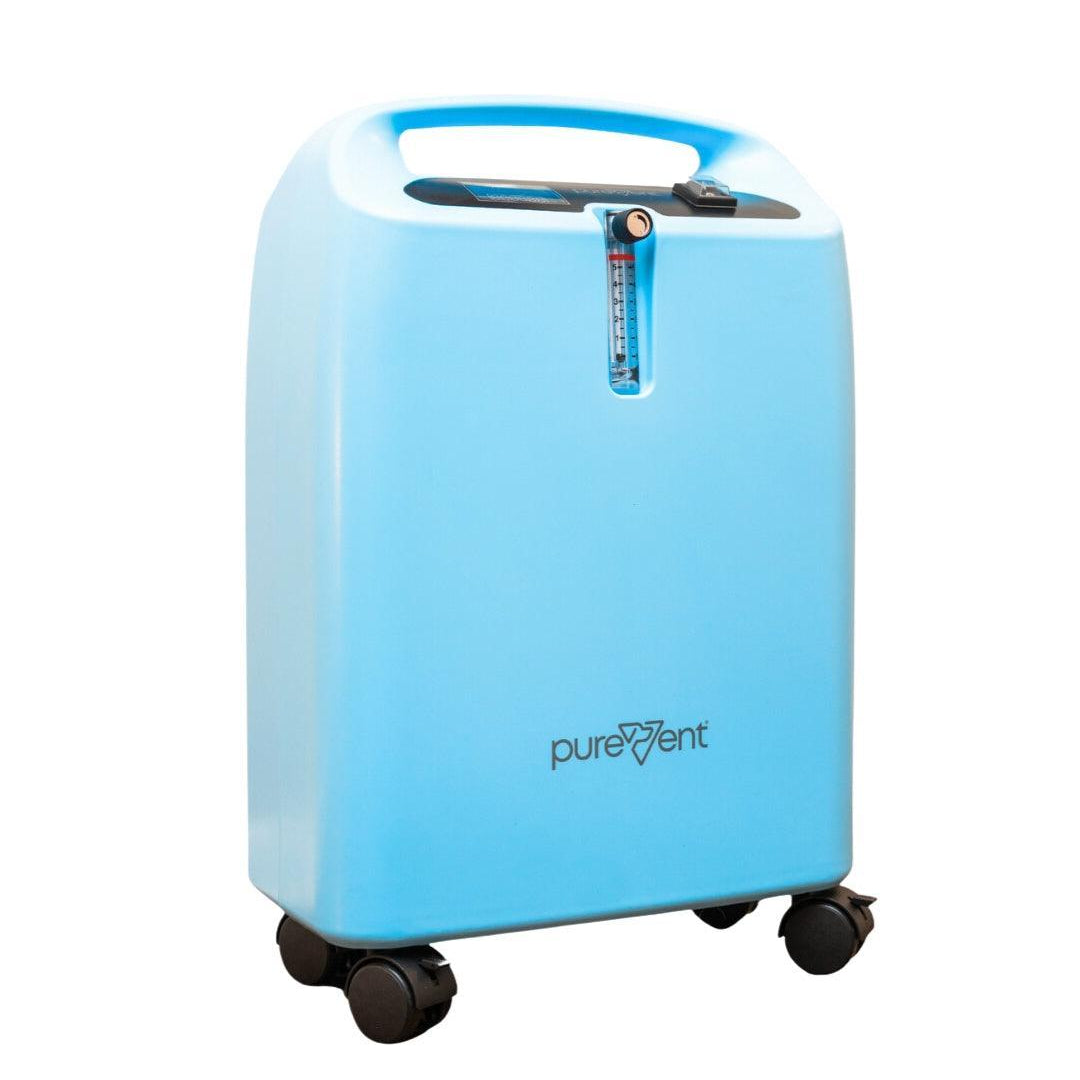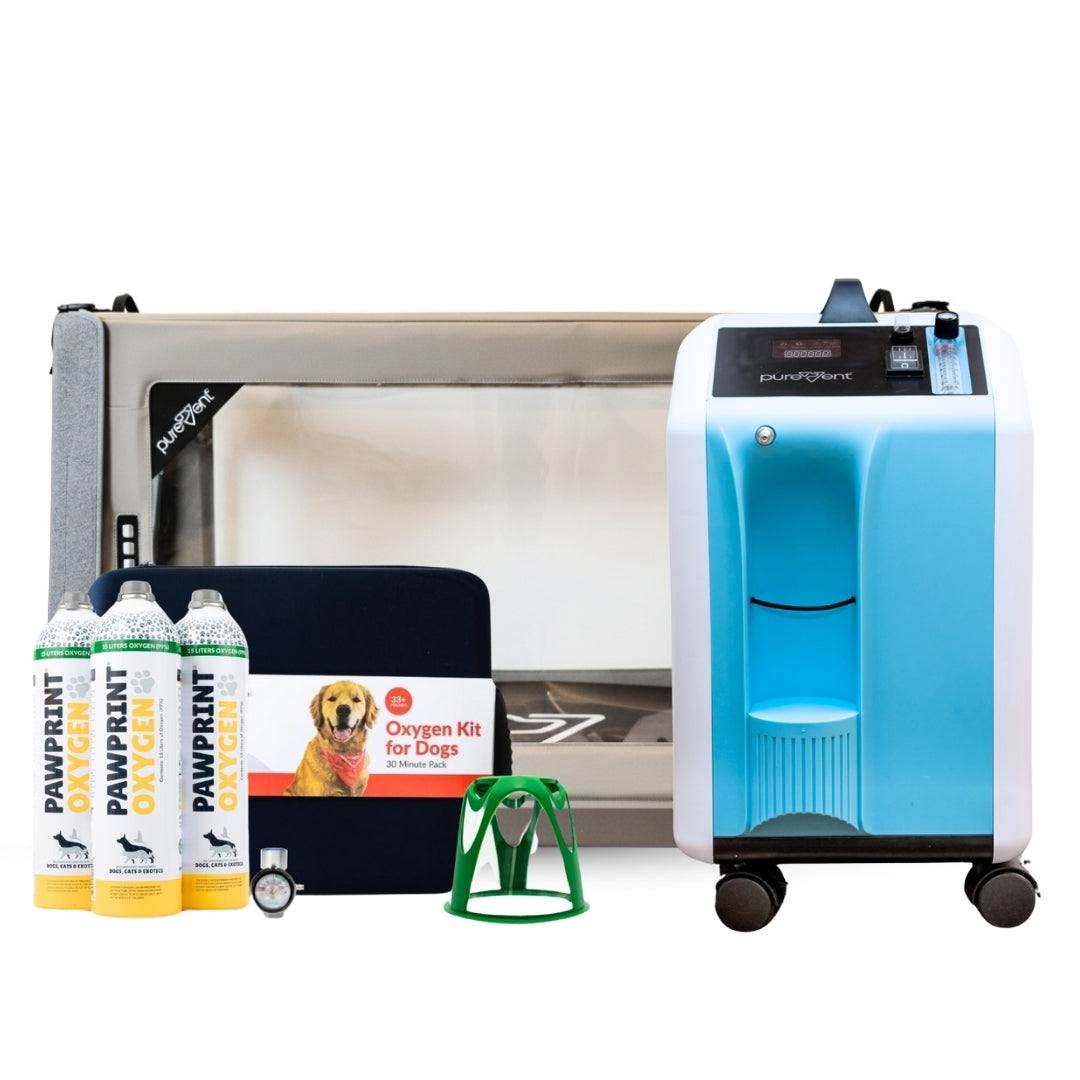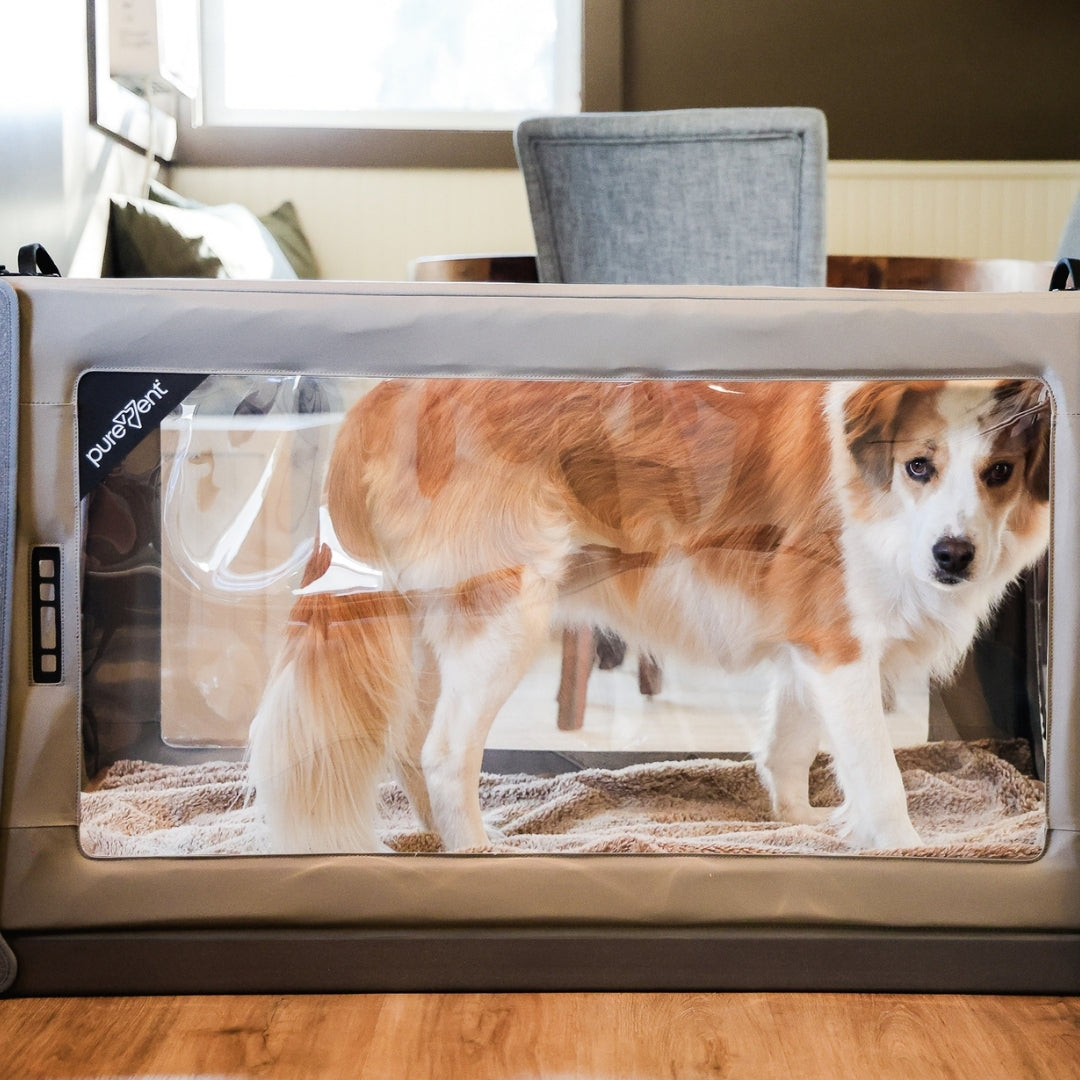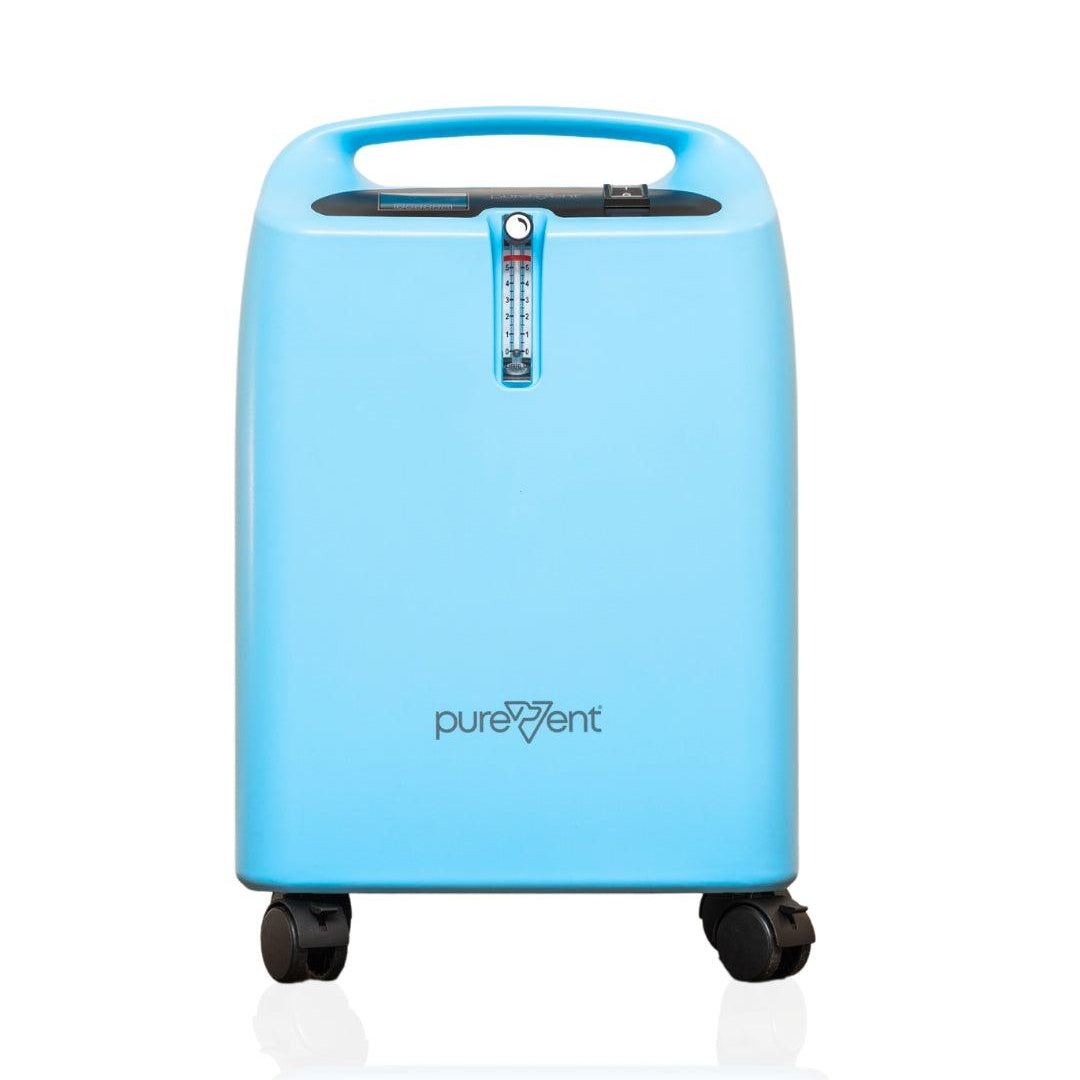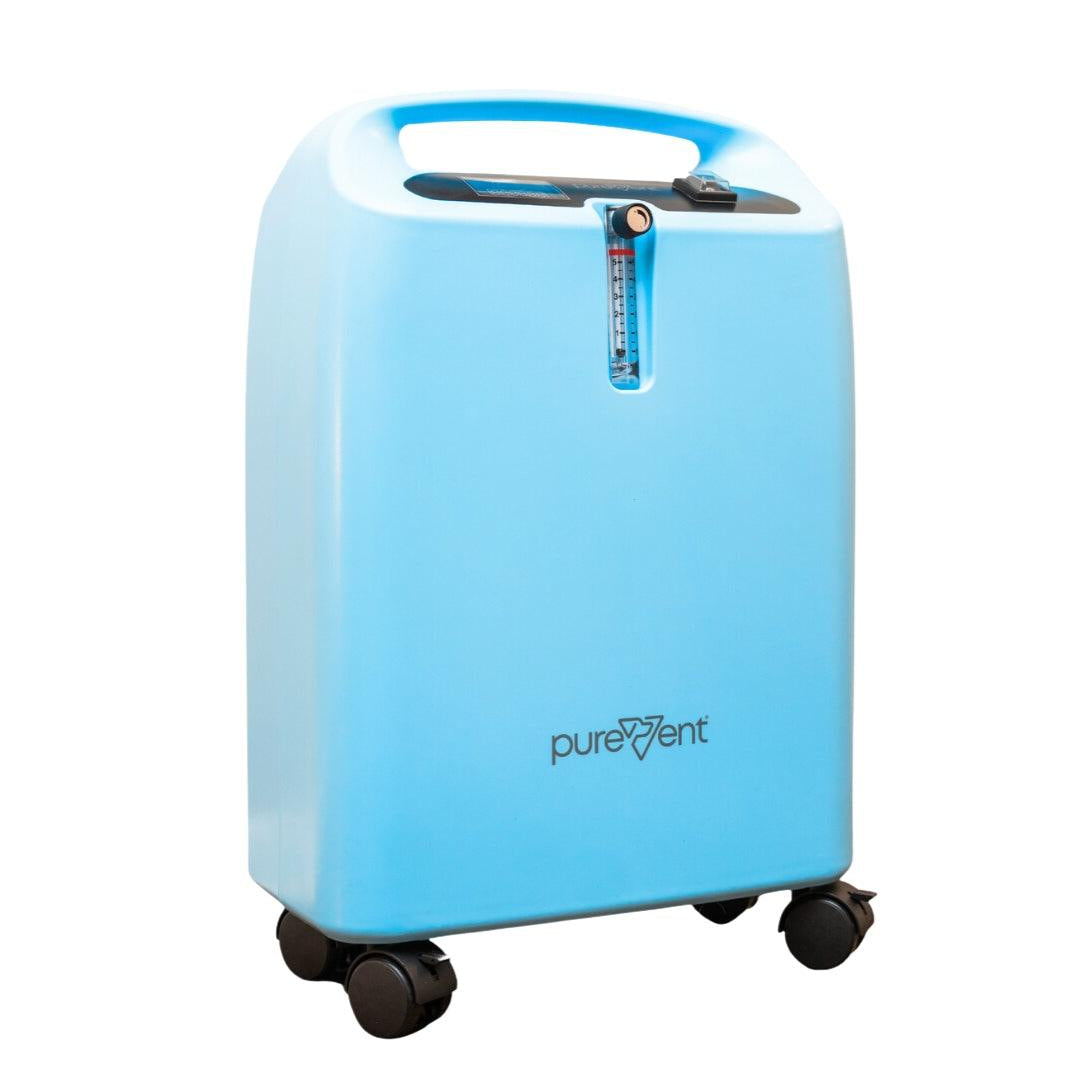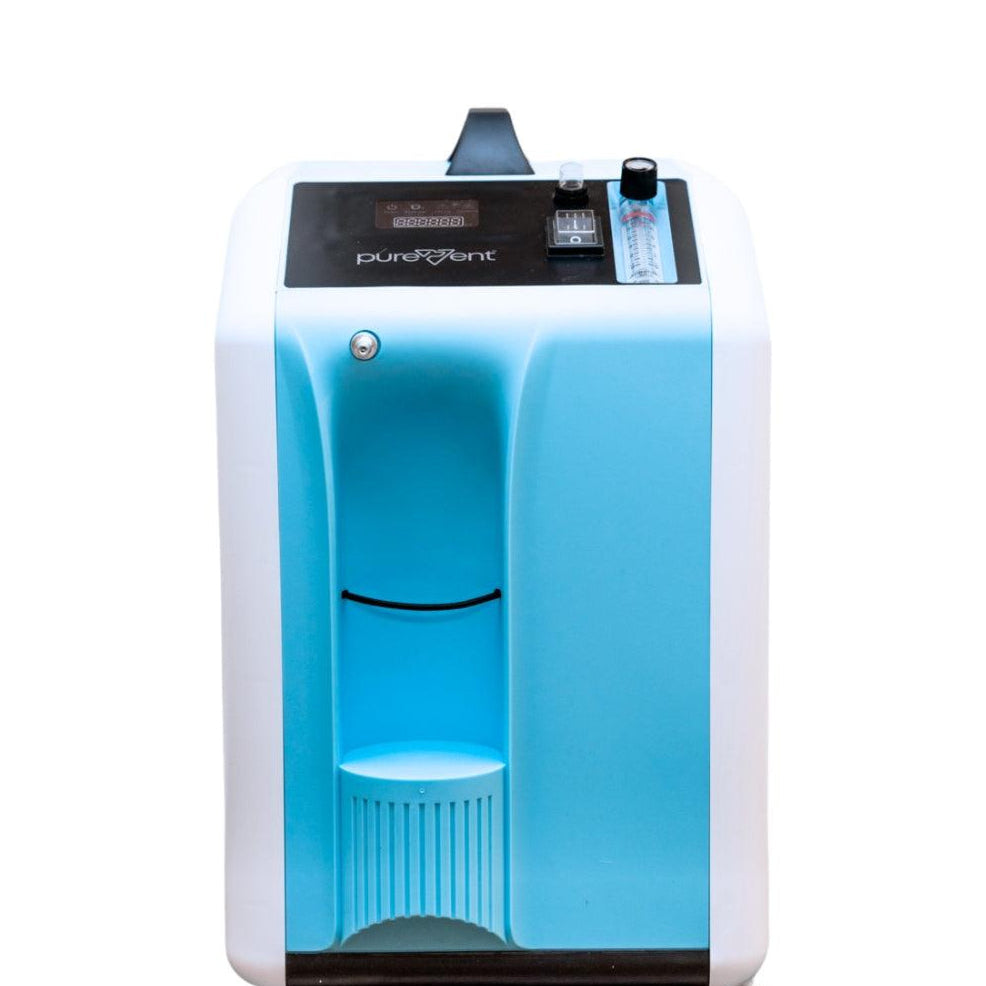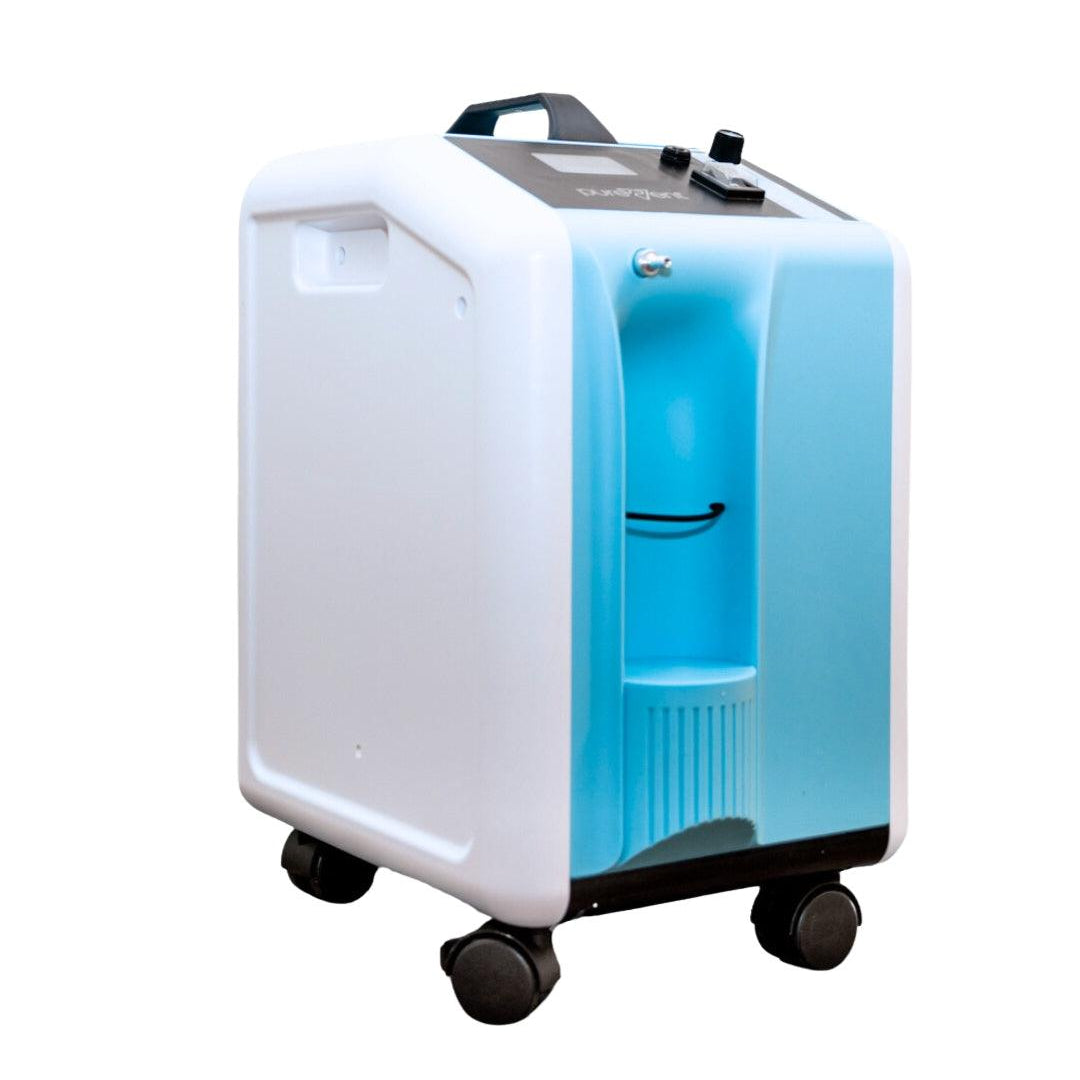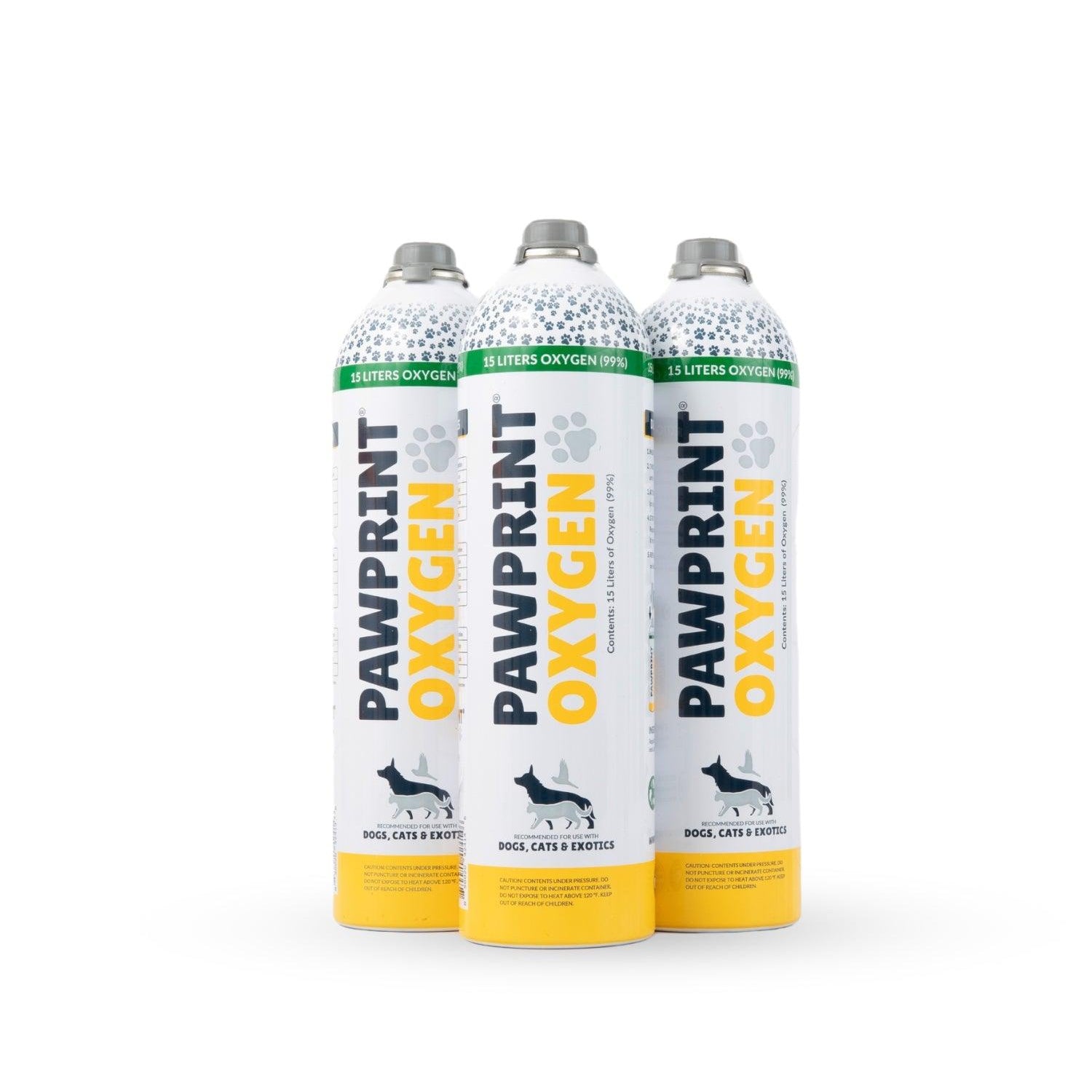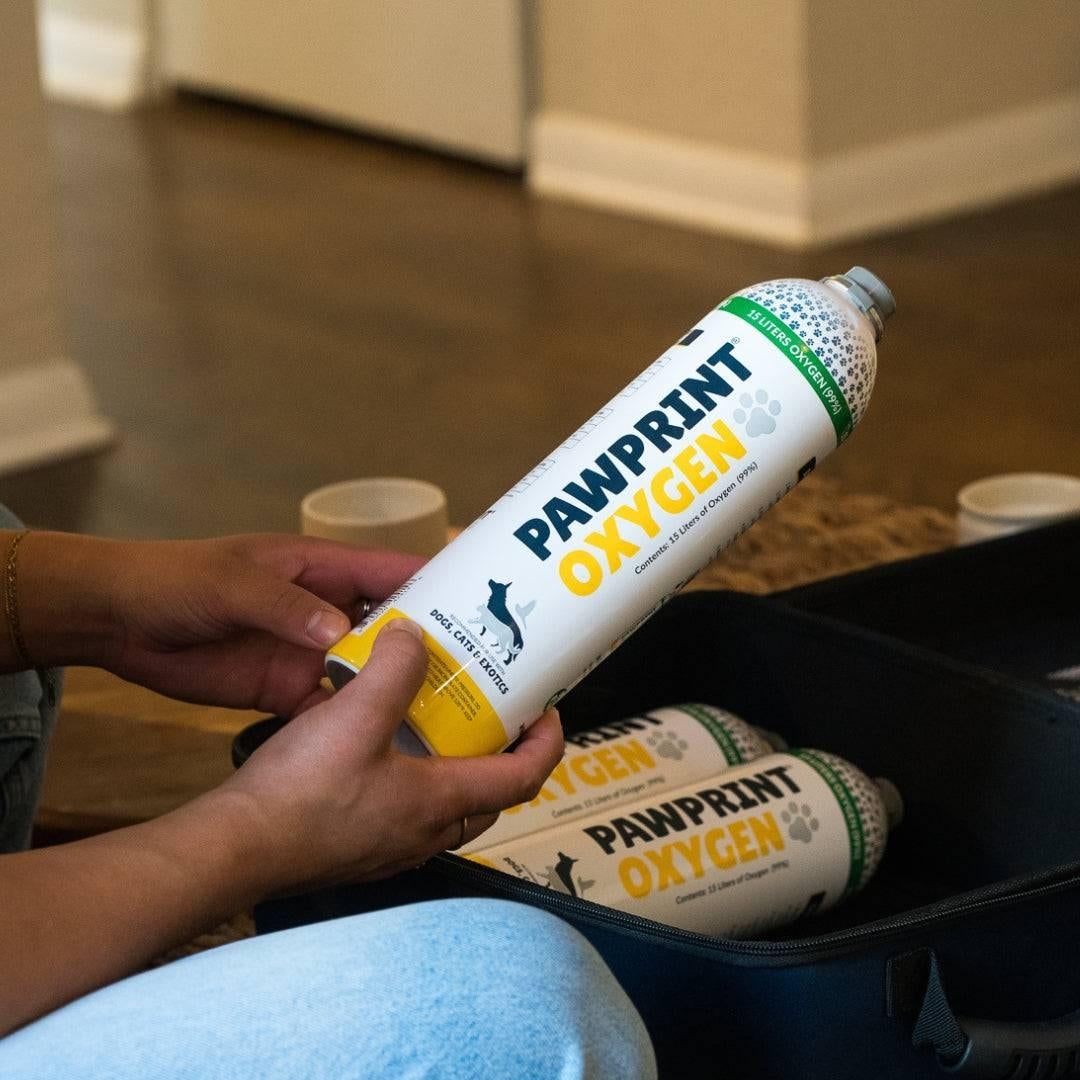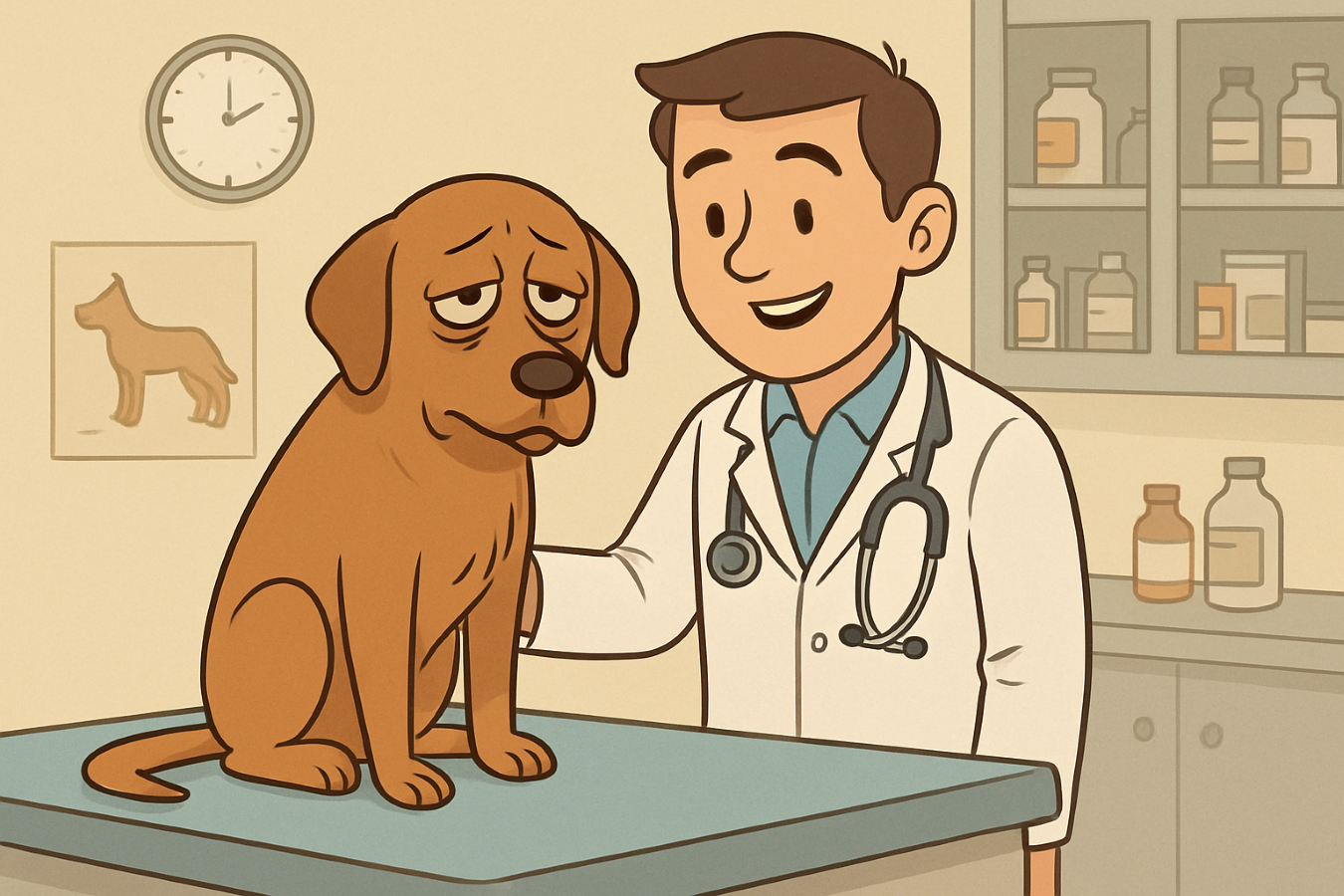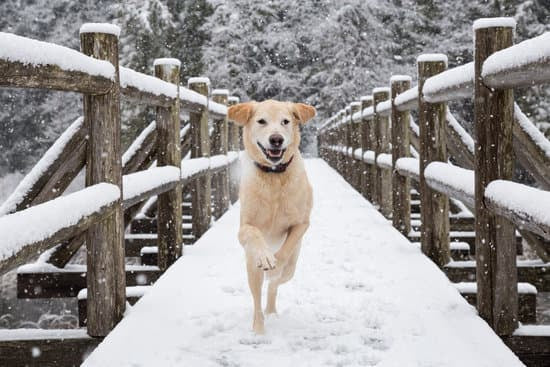How to Refer Pawprint Oxygen to Your Patient as a Veterinarian
Pawprint Oxygen’s Rescue Oxygen System is designed to be easily referred, dispensed, and introduced to pet parents. Veterinarians can rest easy recommending this Rescue Oxygen Kit to Pet Parents as each kit comes with a pre-set flow rate regulator and between 30-90 minutes of Oxygen supply.
Learn how to recommend oxygen in just 3 easy steps:
Table of Contents
Step 1: Determine the Correct Oxygen Flow Rate for the Patient
The flow rate is dependent on the device used to administer oxygen. The recommended flow rates to achieve desired oxygen supplementation and avoid rebreathing are:
- 200ml/kg/min for a loose-fitting mask
- 100ml/kg/min for a PureVent Oxygen Mask
-
50-100 ml/kg/min via nasal (pharyngeal) catheter
Use the chart below to determine the appropriate flow rate based on the pet’s weight and the device used to administer oxygen:
Multiply the dose (mL/kg/min) by the weight of the patient (kg) to get the flow rate. Then round to the closest whole number to select the appropriate Regulator (currently available in 0.5, 1.0, 2.0, and 3.0 LPM).
A 5 kg dog using a loose-fitting mask at 200ml/kg/min would need a 1 liter per minute (LPM) Regulator: 5kg x 200ml/kg/min = 1000ml/min = 1 LPM Regulator
A 35 kg dog with one nasal cannula at 50ml/kg/min = 1740 ml/min = 1.74 LPM. This rounds to a 2 LPM Regulator.
A 7 kg cat using the PureVent Oxygen Mask at 100ml/kg/min = 700ml/min = 0.7 LPM. This rounds to a 1 LPM Regulator.
Step 2: Determine the Number of Oxygen Canisters Needed
The veterinarian should dispense enough canisters so that the pet parent is able to administer oxygen at home to stabilize and/or prepare for transport and provide oxygen on the way to the veterinary hospital. Multiple Canisters will typically be needed to accomplish this.
Example 1: Dispensing for Home Rescue and Transport
A patient is using a 1 LPM regulator and lives 10 minutes from the primary care practice and 20 minutes to the local emergency practice.
Plan for the longer trip to the emergency practice, at 20 minutes plus 10 minutes of prep (and depending on the condition perhaps stabilization at home) plus 10 minutes of buffer. This would be 40 minutes in total. Using a 1 LPM flow rate, 40 liters of oxygen, and since each canister contains 15 liters of oxygen USP, the pet parent should minimally have on hand 3 Canisters during transport and more if home stabilization is being attempted. The pet parent would change the Canister approximately every 10 minutes as indicated by the gauge on the Regulator.
Can I refill my canister after use?
Oxygen canisters cannot be refilled. Please recycle your empty canisters. You can reorder canisters at any time!
What is the shelf life on the oxygen canisters?
We have a two-year shelf life on our Oxygen Canisters. This shelf life is for the seal on the Oxygen Canister itself, not the oxygen.
Store canisters in a cool, dry place and if the seal is not tampered with, the oxygen will stay in the canister.
How long does each oxygen canister last?
Pawprint Oxygen Canisters can last up to 30 minutes. How long the canisters last is dependent on the flow rate that you’re using.
The flow rate is the “dosage” of the oxygen drug and determines the rate at which the oxygen gas leaves the canister.
Your Portable Oxygen Kit will include a regulator that is pre-set to the flow rate dictated by the weight range best for your pet. If you did not purchase a kit, and need a regulator, they can be purchased separately.
These are the durations that the canister will last for each of the flow rates:
0.5 Liters per minute: 30 minutes
1.0 Liters per minute: 15 minutes
2.0 Liters per minute: 7.5 minutes
3.0 Liters per minute: 5 minutes
Example 2: Transporting to a Referral Practice
A referral practice is 20 minutes away and a dog is being transferred with nasal cannulas using a 2 LPM regulator. 20 minutes of travel plus 10 minutes of buffer- 30 minutes. With a 2 LPM Regulator, 60 liters of oxygen is needed.
With 15 L Canisters, 4 canisters would be minimally needed, but it would be recommended to dispense 5-6 canisters in case of traffic or getting lost. The owner caring for the pet would need to change canisters approximately every 5 minutes.

Are You a Veterinarian and Want to Learn More?
Take a look at our Resources or For Vets page for more information.
3. Demonstrate the Pawprint Oxygen System to the Pet Parent or Caregiver
The rescue oxygen system is easy to use and can be introduced to pet owners in minutes. Pet parents should be shown how to start and stop the flow of oxygen and then demonstrate this ability to the veterinarian. They should also be shown how to read the gauge. When the gauge reads “EMPTY,” replace the oxygen canister.
Pawprint Oxygen provides instruction cards that veterinarians can fill out with the patient’s flow rate. The card includes instructions for use, as well as a dosage chart for reference by the veterinarian. The veterinarian may choose to supply additional discharge instructions depending on the patient and their condition.
If the episode is expected to subside with oxygen supplementation, as can often be the case with dynamic obstructions (e.g. feline asthma, collapsing trachea) instruct the pet parent to “Administer rescue oxygen until the patient has returned to normal. If the pet does not improve after (insert criteria) or deteriorates when oxygen is discontinued, continue the rescue oxygen administration and immediately transport to a veterinarian.”
This is in contrast with conditions that have progressive decompensation such as congestive heart failure. In these cases, you may instruct the pet parent to “Continue administering rescue oxygen and see a veterinarian immediately!”.
The instructions for transferring patients would be similar: “Take (insert pets name) directly to (insert veterinary hospital) with the supplied oxygen. Change canisters when the gauge reaches empty approximately every (divide the volume of the canister by the regulator flow) minutes.”
Additional discharge instructions may also include: “Follow all warnings on the canister. For example, do not use open flames or smoke when administering oxygen.” This is in addition to “If your pet will not tolerate the administration device or appears over heated, remove the device and place the tube coming from the regulator close to their mouth and nose while transporting to a veterinarian.”
About Sean Smarick, VMD, DACVECC
Dr. Sean Smarick received his Doctor of Veterinary Medicine from the University of Pennsylvania in 1991. He then completed a residency in Veterinary Small Animal Emergency and Critical Care at the University of California, Davis in 2003 and, in the same year, became a Diplomat of the American College of Veterinary Emergency and Critical Care. In his 30 years of practice, Dr Smarick has enjoyed being in the ICU and emergency rooms of private and university practices, participating in CPR and clinical research, contributing to journals and textbooks, training residents and interns, and serving on the board of several veterinary businesses and organizations. Dr. Smarick currently serves as the Post-Cardiac Arrest Care Domian Chair of RECOVER , as a Trustee on the Board of the PVMA , and as a commissioned Veterinary Corps Officer in the US Army Reserves. In addition to providing local and national instruction to handlers, paramedics and veterinarians, he is involved in pre-hospital veterinary care as a member of the VetCOT ATLS and education committees, the K9 TECC working group , and on the board of NAVEMS.

